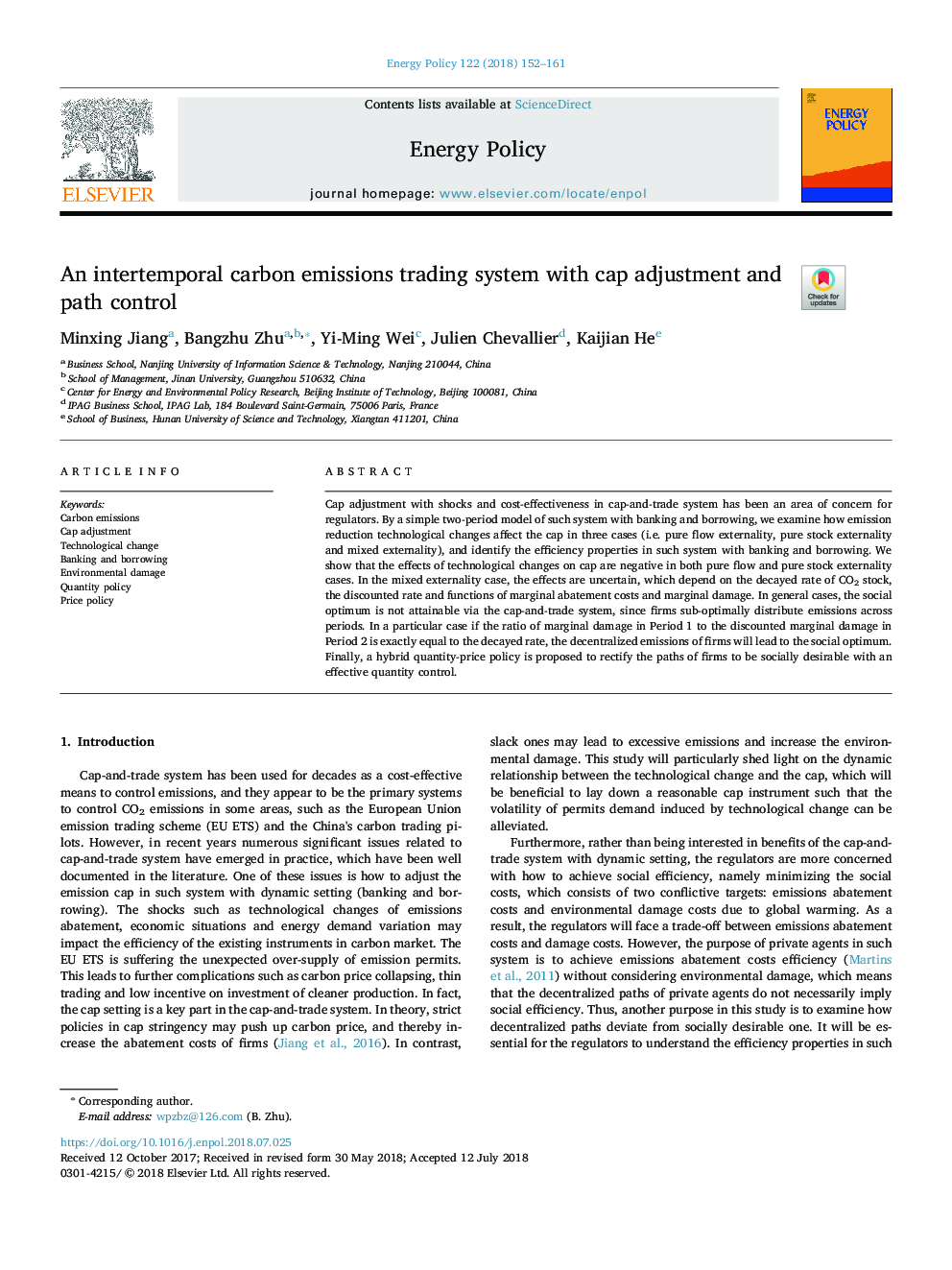| Article ID | Journal | Published Year | Pages | File Type |
|---|---|---|---|---|
| 7396526 | Energy Policy | 2018 | 10 Pages |
Abstract
Cap adjustment with shocks and cost-effectiveness in cap-and-trade system has been an area of concern for regulators. By a simple two-period model of such system with banking and borrowing, we examine how emission reduction technological changes affect the cap in three cases (i.e. pure flow externality, pure stock externality and mixed externality), and identify the efficiency properties in such system with banking and borrowing. We show that the effects of technological changes on cap are negative in both pure flow and pure stock externality cases. In the mixed externality case, the effects are uncertain, which depend on the decayed rate of CO2 stock, the discounted rate and functions of marginal abatement costs and marginal damage. In general cases, the social optimum is not attainable via the cap-and-trade system, since firms sub-optimally distribute emissions across periods. In a particular case if the ratio of marginal damage in Period 1 to the discounted marginal damage in Period 2 is exactly equal to the decayed rate, the decentralized emissions of firms will lead to the social optimum. Finally, a hybrid quantity-price policy is proposed to rectify the paths of firms to be socially desirable with an effective quantity control.
Related Topics
Physical Sciences and Engineering
Energy
Energy Engineering and Power Technology
Authors
Minxing Jiang, Bangzhu Zhu, Yi-Ming Wei, Julien Chevallier, Kaijian He,
